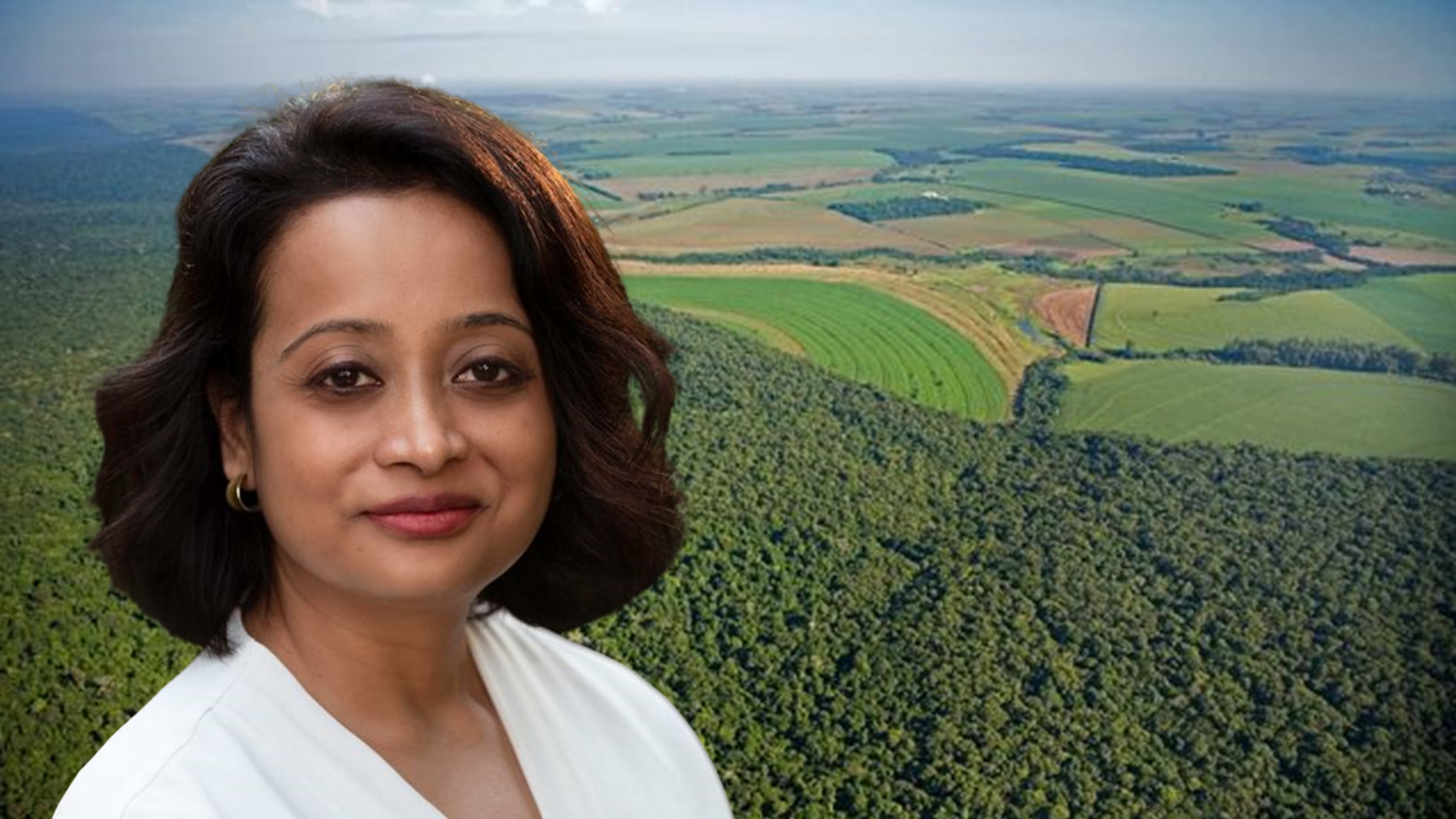Insights from The Nature Conservancy’s Saswati Bora on Regenerative Food Systems

For more than seven decades, The Nature Conservancy has become one of the most influential and impactful conservation organizations on the planet. Their reach expands across 80+ countries and territories, operating more than 100 marine conservation projects and has helped protect more than 125 million acres of land. Food and agriculture have always been a part of TNC’s work, but until recently, the approach focused more on limiting the expansion of agriculture into critical habitats. But the organization is taking a new approach to food. In 2021, Saswati Bora, Global Director of Regenerative Food Systems, joined TNC to lead the way to transform the global food system in innovative ways.
“What we are trying to do is use our work on agriculture and food as an entry point to meet our conservation goals,” says Bora. “For too long, we have always thought of agriculture and food as a problem.” She is referring to the data that show food production, such as livestock and fish farms, contributes about a quarter of the world’s greenhouse gas emissions, 90% of land use change, and 70% of freshwater withdrawal. “Globally, the focus on agriculture and food has been about ‘feeding the world,’ but we have not focused enough on the unintended consequences of feeding the world like what it does to our soil, water, and air.”
This modern approach to “feeding the world” is extractive of nature, driving degradation of our land and waters while accelerating negative climate impacts. The way we produce food can help protect and restore nature. “Many of the practices originated by Indigenous communities and others are actually restorative and regenerative of nature, and somehow we lost that,” says Bora. “So, we are thinking about how we shift our approach so that agriculture and food is not the problem, but instead how to work with farmers and ranchers so we can feed the world while meeting our biodiversity and climate outcomes.”
Shifting an entire global food system is no easy feat. Our global industrial agriculture system has functioned by extracting from the planet for decades, so it is a matter of turning an enormous ship. It takes time to transition to a restorative approach. TNC calls this element of their work the Regenerative Foodscape Strategy.
The term regenerative agriculture is fairly new to the lexicon despite the practices existing for millennia. Essentially, it means producing food in a way that restores or gives back to nature versus solely extracting resources. Examples of approaches to regenerative agriculture are rotational grazing, no till farming, cover cropping, diversifying crops that help keep the soil healthy, nutrient management, agroforestry among others. There’s also a holistic element to regenerative farming as it’s inclusive of thinking about how healthy ecosystems benefit people. A healthy ecosystem would have high levels of biodiversity of plant and animal species and a physical environment where they live. It should be able to maintain its functions and resilience over time and it’s important that this also benefits people. Equity, therefore, is an essential element to TNC’s work.
“We are trying to prioritize equitable conservation which means understanding how our conservation work impacts people, and if there are disproportionate impacts on different groups of people. Then addressing those impacts through our project work. With Regenerative Foodscapes, this means improving agricultural livelihoods through improved access to resources, profitability, and resilience, creating durable and sustainable change for people in food systems,” she says, “focusing on small farmers, the Indigenous communities, the communities on the ground, and how we bring them to the foreground.”
Bora says that the strategy towards the transition to a regenerative food system requires three major elements: 1) knowledge and science (i.e., knowledge networks to support farmers and any other policy makers), 2) the right markets to ensure the system is set up so farmers can sell their products, and 3) public support. “Our work is about how we ensure that all of these are working towards creating an enabling environment.”
The current global food system only compensates farmers by production and productivity levels. “In this system, farmers aren’t usually incentivized for valuing natural capital,” says Bora, referring to the value of natural and environmental assets such as the soil, air, and water. TNC’s focus is to then find ways these food producers can be compensated for their efforts to move their production to a more regenerative approach.
The industrial system doesn’t incentivize this more holistic approach because, truthfully, it’s more time-intensive and requires resources and knowledge that aren’t readily available to all farmers and ranchers. TNC is positioned to fill the knowledge and resource gap to help food producers make the shift. For instance, TNC is addressing both industry and policy-level change. “We are working with companies across the food value chain and local organizations to see how we can influence the supply chain and procurement policies so that they are procuring food that is better for the climate, it's better for biodiversity, it's better for water, and paying farmers to do that,” says Bora. For global policy, subsidies are focused on traditional agriculture production. TNC is providing support to subsidize natural capital so farmers are compensated for protecting and creating vibrant ecosystems.
Bora is feeling very hopeful for the future of this work. “The movement is happening right now,” she says, seeing the potential for change. “I do hope that in the next ten to twelve years, we see a huge realignment in how we think about the way we are producing food, that it's good for the planet and good for people.”
Learn more about a food system that can heal the planet:
